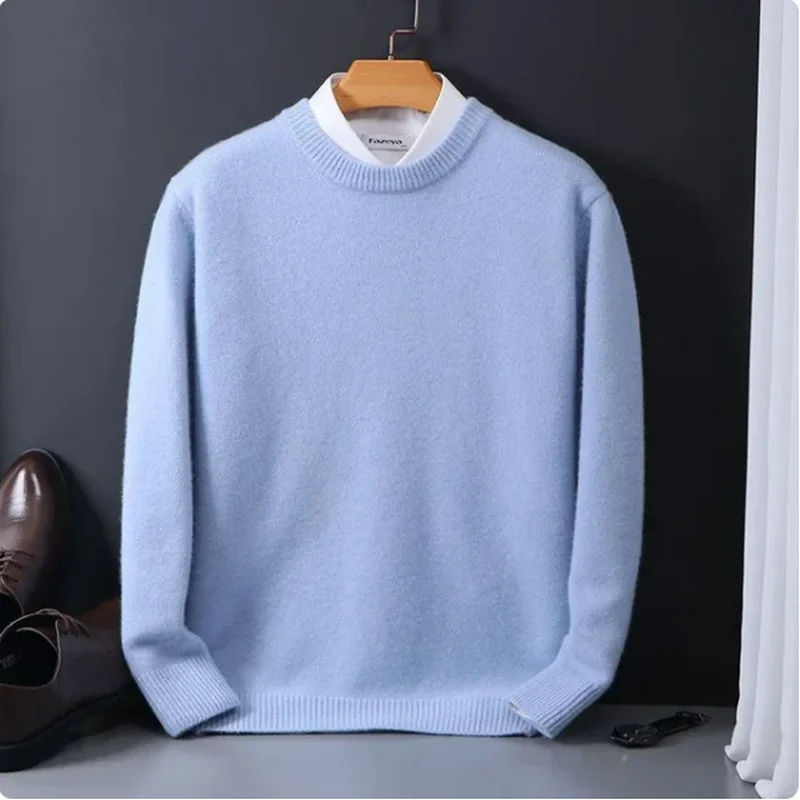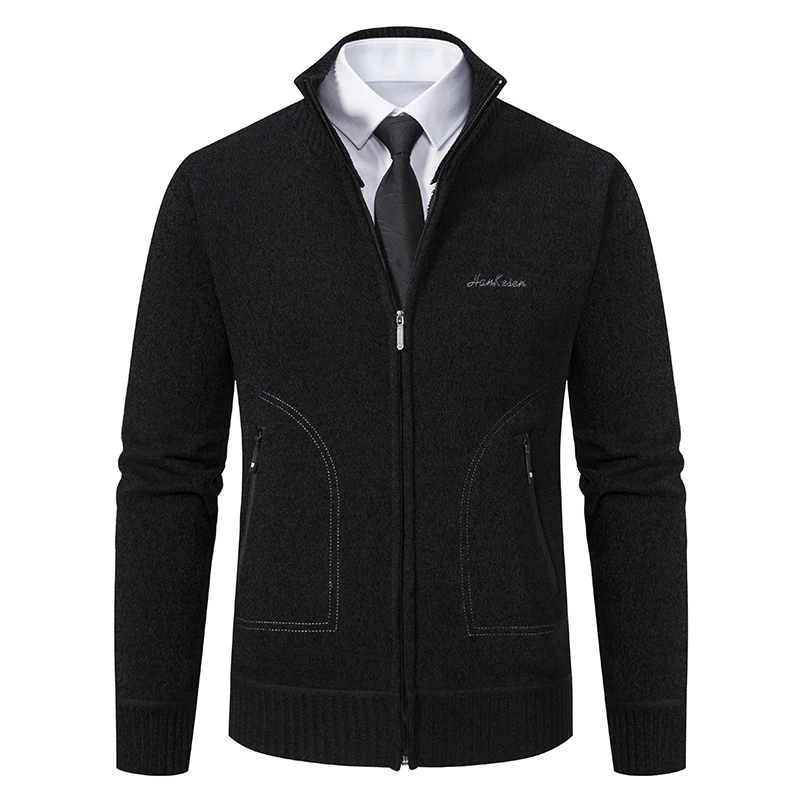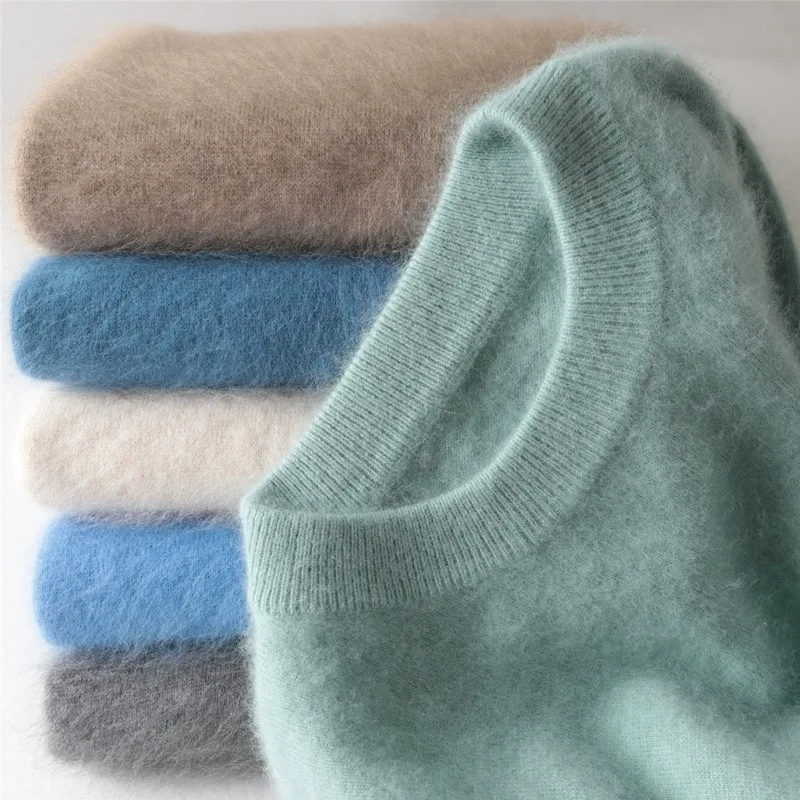Understanding Sustainable Cashmere
What Makes Cashmere Sustainable?
Sustainable cashmere represents a thoughtful evolution beyond conventional production methods, embracing practices that balance luxury with responsibility. At its core, sustainable cashmere is built on three fundamental pillars:
- Animal Welfare: Humane treatment of cashmere goats, including proper nutrition, veterinary care, and gentle, non-harmful harvesting techniques
- Environmental Protection: Responsible land management, biodiversity preservation, and reduced resource consumption throughout production
- Social Responsibility: Fair wages and safe working conditions for herders and factory workers, plus support for traditional herding communities
These principles apply throughout the entire supply chain—from the Mongolian and Chinese grasslands where goats graze to the final manufacturing and packaging of garments. The difference in environmental impact is substantial: while traditional cashmere production can contribute to desertification through overgrazing, sustainable operations typically use 50-70% less land per kilogram of fiber produced and generate approximately 30% lower carbon emissions through improved practices.
Understanding these foundational elements helps consumers recognize truly sustainable options amid increasing styling tips for cashmere cardigans and marketing claims.
Environmental and Ethical Impacts of Conventional Cashmere
Conventional cashmere production creates several significant environmental challenges that sustainable practices seek to address:
- Land Degradation: Traditional cashmere production has contributed to approximately 65% of Mongolia’s grasslands experiencing some form of desertification, as hungry goats pull plants out by the roots rather than simply grazing the tops
- Resource Intensity: Processing just one kilogram of conventional cashmere can require up to 18,000 liters of water
- Chemical Pollution: Standard dyeing processes often release untreated wastewater containing heavy metals and toxins into local water systems
- Animal Welfare Concerns: Conventional harvesting may involve painful methods and keeping animals in crowded, stressful conditions
Beyond environmental issues, conventional production often underpays herders, pushing them to maximize herd size at the expense of land health. These challenges make understanding responsible cashmere production methods essential for consumers seeking truly sustainable options.
Key Certifications for Sustainable Cashmere
Sustainable Fibre Alliance (SFA)
The Sustainable Fibre Alliance stands as a global non-profit focused specifically on preserving the cashmere industry through responsible practices. The SFA certification program centers on four critical areas:
- Verified animal welfare standards ensuring goats are treated humanely
- Environmental stewardship focusing on grassland management and preservation
- Herder community welfare including fair wages and working conditions
- Complete supply chain traceability from goat to finished product
For consumers, SFA certification provides assurance that their cashmere comes from producers committed to improving practices across every aspect of production. The certification process includes rigorous on-site assessments and continued monitoring, with over 60 organizations currently participating in their programs.
Learning to find eco-friendly cashmere often starts with recognizing this important certification.
The Good Cashmere Standard®
Developed by the Aid by Trade Foundation, The Good Cashmere Standard® focuses primarily on cashmere production in Inner Mongolia, addressing challenges specific to this important producing region. This certification rests on three foundational principles:
- Animal welfare benchmarks that include proper nutrition, shelter, and gentle, stress-free harvesting
- Nature conservation practices that promote responsible grazing and land management
- Social responsibility requirements ensuring fair treatment and payment of workers
What distinguishes this standard is its farm-level verification system. Independent auditors regularly visit participating farms to ensure compliance with all requirements, providing consumers with confidence that certified products uphold specific ethical and environmental standards throughout production.
Global Organic Textile Standard (GOTS)
The Global Organic Textile Standard takes a holistic approach to textile certification, covering both environmental and social criteria across the entire production chain. For cashmere to receive GOTS certification, the fiber must come from organic farming practices where synthetic pesticides, GMOs, and chemical fertilizers are prohibited.
Beyond fiber production, GOTS certification regulates processing methods by prohibiting harmful chemicals and requiring water treatment before discharge. The standard also mandates fair labor practices including living wages and safe working conditions.
GOTS is particularly valuable for cashmere consumers because it verifies integrity throughout the entire production chain—from goat raising through final garment manufacture—ensuring that every step meets specific ecological and ethical criteria.
Other Important Certifications
| Certification | Focus | Significance |
|---|---|---|
| OEKO-TEX Standard 100 | Product safety | Tests finished products for harmful substances, ensuring they’re safe for human use and skin contact |
| Responsible Wool Standard (RWS) | Animal welfare and land management | Though designed for wool, its principles for respectful animal treatment apply to cashmere production |
| Organic Content Standard (OCS) | Material verification | Verifies the exact amount of organic material in products, providing transparency about organic content percentages |
These certifications complement each other, addressing different aspects of sustainable production. For instance, a product might carry both GOTS certification (for organic practices) and OEKO-TEX certification (verifying it contains no harmful substances), providing comprehensive assurance across multiple sustainability concerns.
When browsing cashmere sweaters online, these certifications offer valuable guidance for making truly sustainable choices.
Types of Eco-Conscious Cashmere

Recycled Cashmere: A Second Life for Luxury
Recycled cashmere represents one of the most environmentally friendly options available to conscious consumers. This innovative approach gives new life to post-consumer and post-industrial cashmere waste through a remarkable transformation process:
- Collected cashmere garments are carefully sorted by color and quality
- The material is mechanically broken down into fibers without chemicals
- These fibers are cleaned, carded, and spun into new yarn
- New garments are created without additional dyeing when colors are matched
The environmental benefits of this approach are substantial:
- Water usage reduction of up to 80% compared to virgin cashmere
- Energy consumption decreased by approximately 50%
- Zero new animal impact while diverting textiles from landfills
- Elimination of dye chemicals when color-sorted
While recycled cashmere fibers may be slightly shorter than virgin ones (resulting in a somewhat different hand feel), advancements in processing techniques have significantly improved quality, making it increasingly difficult to distinguish between recycled and virgin products.
For those interested in exploring sustainable options further, our eco-friendly cashmere guide provides comprehensive information.
Organic Cashmere: Natural from Start to Finish
Organic cashmere represents a commitment to natural processes throughout the entire production chain. Unlike vague “natural” marketing claims, true organic cashmere must meet specific standards:
Organic cashmere production begins with certified organic grazing areas where no synthetic pesticides, herbicides, or fertilizers are used. Goats are raised without growth hormones or preventative antibiotics, receiving organic feed when grazing alone isn’t sufficient. During processing, harsh chemicals and synthetic dyes are replaced with gentler alternatives like natural plant-based dyes.
Testing reveals that organic cashmere typically contains 60-95% fewer chemical residues than conventional alternatives. This reduction benefits both sensitive skin and environmental health.
Consumers should look for credible organic certifications like GOTS rather than relying on unverified claims, as the term “organic” remains less regulated in textiles than in food. For those seeking comfortable yet sustainable luxury, oversized cashmere sweaters produced with organic methods offer both style and environmental benefits.
Ethically Sourced and Traceable Cashmere
Ethically sourced cashmere integrates social responsibility with environmental consciousness, focusing on the people behind the product alongside ecological concerns. This approach encompasses:
- Fair payment ensuring herders receive living wages for their specialized work
- Safe working conditions throughout the supply chain
- Community investment in healthcare, education, and infrastructure
- Preservation of traditional herding knowledge and techniques
- Long-term partnerships rather than exploitative relationships
Modern traceability technology now allows consumers to verify these ethical claims. Some premium brands implement:
- QR codes linking to specific farm information and processing details
- Blockchain tracking that records each production stage
- Batch numbering systems enabling full tracing from goat to garment
When successfully implemented, ethical sourcing creates a virtuous cycle where herding communities gain economic stability, allowing them to invest in more sustainable land management practices rather than increasing herd sizes to compensate for low prices.
How to Identify Genuine Eco-Conscious Cashmere
Verifying Sustainability Claims
With growing consumer interest in sustainable products, distinguishing genuine eco-conscious cashmere from greenwashed alternatives requires careful evaluation:
- Check for specific, verifiable claims: “Made with certified organic cashmere” is more reliable than vague statements like “natural” or “eco-friendly”
- Look for recognized certification logos: Authentic certification marks from SFA, GOTS, or The Good Cashmere Standard provide third-party verification
- Assess transparency levels: Truly sustainable brands typically share detailed information about their supply chain, production facilities, and sustainability initiatives
- Evaluate sustainability reporting: Legitimate brands publish regular sustainability reports with measurable goals and progress metrics
- Research manufacturing locations: Brands should disclose where their cashmere is harvested and processed
Red flags that may signal greenwashing include using environmental imagery without specific claims, emphasizing a single eco-friendly aspect while ignoring other impacts, or making claims without evidence or certification.
When considering how to maximize the value of your sustainable cashmere investment, exploring tips for layering cashmere cardigans can help you create versatile outfits that extend your wardrobe.
Quality Indicators That Signal Sustainability
High-quality cashmere and sustainability are inherently linked—premium pieces last longer, reducing the need for frequent replacement and lowering lifetime environmental impact. When evaluating cashmere quality:
- Check the ply: 2-ply cashmere (two yarns twisted together) offers superior durability and warmth compared to single-ply
- Assess fiber length: Longer fibers (ideally exceeding 36mm) resist pilling and maintain appearance longer
- Evaluate fiber thickness: Premium cashmere fibers measure under 16 microns in diameter, feeling noticeably softer
- Perform the touch test: Quality cashmere should feel incredibly soft, lightweight, and warm without bulk
Premium cashmere may carry a higher initial price tag, but its extended lifespan—often 10+ years with proper care compared to 1-2 years for lower-quality alternatives—makes it more economical and environmentally friendly over time.

Digital Tools and Resources for Conscious Consumers
The digital landscape offers valuable resources for researching sustainable cashmere options:
- Good On You: Rates brands on their environmental impact, labor conditions, and animal welfare practices
- Sustainable Apparel Coalition: Provides Higg Index scores measuring environmental and social impacts
- Fashion Transparency Index: Evaluates brand transparency regarding sustainability practices
- Common Objective: Connects consumers with verified sustainable suppliers and educational resources
- #SustainableFashion communities: Social media groups where consumers share experiences with eco-friendly brands
These tools help verify brand claims beyond what appears on product labels, providing deeper insight into company practices and commitment to sustainability. For consumers seeking additional sustainable options, our cashmere wool cardigans collection offers carefully vetted choices.
Brands Committed to Sustainable Cashmere
Industry Leaders in Eco-Conscious Cashmere
| Brand | Sustainability Focus | Notable Practices |
|---|---|---|
| NAADAM | Direct sourcing, herder support | Works directly with Mongolian herders, pays premium prices, invests in clean water access |
| Gentle Herd | Animal welfare, traceability | SFA certified, uses traceable cashmere, focuses on humane harvesting practices |
| Everlane | Transparency, factory conditions | Publishes detailed supplier information, focuses on clean energy in factories |
| Patagonia | Recycled materials, environmental activism | Uses recycled cashmere exclusively, supports grassland restoration projects |
| Quince | Affordable sustainability, factory-direct | Eliminates middlemen to make sustainable cashmere more accessible |
| GOBI Cashmere | Vertical integration, water conservation | Controls entire production process, implements water recycling systems |
| The Reformation | Climate-positive goals, recycled materials | Carbon-neutral operations, focuses on recycled cashmere blends |
| Universal Standard | Size inclusivity, longevity | Offers sustainable cashmere in sizes 00-40, designs for long-term use |
| The Pangaia | Material innovation, research | Develops innovative sustainable fibers, combines cashmere with bio-based alternatives |
| Rifò | Circular economy, zero waste | Italian brand focused exclusively on recycled cashmere with zero-waste manufacturing |
These brands represent different approaches to sustainability, from focusing on herder communities to pioneering recycled materials. Price points vary significantly—from premium investment pieces to more accessible options—allowing consumers at different budget levels to make sustainable choices.
Understanding whether cashmere cardigans are worth investment often depends on evaluating both quality and sustainability credentials.
Evaluating a Brand’s Sustainability Commitment
To assess whether a brand is genuinely committed to sustainability rather than simply using it as a marketing strategy:
- Look beyond surface-level claims by reading sustainability reports and policy documents
- Check for specific, measurable goals with clear timelines rather than vague commitments
- Verify third-party certifications rather than relying on self-reporting
- Research whether sustainability initiatives address their most significant impact areas
- Evaluate transparency about challenges and limitations, not just successes
- Assess whether sustainability is integrated across operations or limited to specific collections
Authentic commitment typically involves comprehensive initiatives addressing multiple sustainability aspects rather than focusing on a single visible feature while ignoring other impacts. For those seeking specific sustainable styles, our collection of women’s cashmere pullovers includes options from verified sustainable producers.
Cashmere Wrap Sweaters, Women's Cashmere Pullovers
$75.89 Select options This product has multiple variants. The options may be chosen on the product pageCashmere Cable Knit Sweaters, Women's Cashmere Pullovers
Price range: $111.82 through $112.93 Select options This product has multiple variants. The options may be chosen on the product pageCropped Cashmere Sweaters, Women's Cashmere Pullovers
$155.77 Select options This product has multiple variants. The options may be chosen on the product pageOversized Cashmere Sweaters, Plus Size Cashmere Sweaters, Women's V-Neck Cashmere Sweaters
$136.87 Select options This product has multiple variants. The options may be chosen on the product pageStriped Cashmere Sweaters, Women's Cashmere Pullovers
$139.68 Select options This product has multiple variants. The options may be chosen on the product pageCashmere Wool Cardigans, Women's Cashmere Cardigans
Price range: $92.23 through $92.45 Select options This product has multiple variants. The options may be chosen on the product page
Extending the Life of Your Cashmere (Supplemental Content)
Is Proper Cashmere Care an Environmental Issue?
Proper cashmere care represents an often overlooked aspect of sustainability that significantly impacts environmental footprint. When cashmere garments last longer, they directly reduce resource consumption and waste generation. Consider that extending a garment’s life by just nine months reduces its carbon, water, and waste footprints by approximately 20-30%.
From an economic perspective, proper care transforms cashmere from a temporary luxury into a long-term investment. While quality sustainable cashmere may initially cost more, its potential decade-plus lifespan (compared to 1-2 years for poorly maintained items) results in a significantly lower cost-per-wear while minimizing environmental impact.
This care-centered approach to sustainability complements ethical production methods, creating a comprehensive approach to responsible luxury consumption.

Essential Care Techniques for Sustainable Cashmere
Proper care significantly extends the life of your cashmere investment while reducing environmental impact:
- Washing: Hand wash with lukewarm water and specialized wool detergent or mild baby shampoo every 5-7 wears. Avoid regular laundry detergents that contain enzymes that damage protein fibers.
- Drying: Gently press (don’t wring) excess water out using a clean towel. Lay flat to dry on a fresh towel away from direct sunlight or heat sources.
- Storage: After cleaning, store folded (never hung) in breathable cotton bags or pillowcases with cedar blocks or lavender sachets as natural moth deterrents. Avoid plastic storage which can trap moisture.
- Pill Management: Remove pills with a specialized cashmere comb or fabric shaver on the lowest setting rather than replacing garments when they begin to pill.
- Spot Cleaning: Address small stains immediately using just cold water and gentle blotting to minimize full washing needs.
These practices not only preserve your cashmere’s appearance and feel but also significantly reduce water, energy, and replacement frequency—making proper care an environmental practice as much as a preservation technique. For additional sustainable options, our men’s cashmere pullovers collection features pieces designed for long-term wear.
Frequently Asked Questions
Is all cashmere inherently unsustainable?
No, cashmere isn’t inherently unsustainable, but its environmental impact depends entirely on production practices. Certified sustainable cashmere, recycled cashmere, and responsibly produced options address traditional cashmere’s environmental challenges through improved grazing management, ethical animal treatment, and resource conservation.
How can I verify a brand’s sustainability claims?
Look for specific certifications like SFA, GOTS, or The Good Cashmere Standard rather than vague terminology. Research the brand’s transparency regarding sourcing, manufacturing locations, and specific sustainability initiatives. Third-party validation through recognized certification bodies provides the most reliable verification.
Why does sustainable cashmere typically cost more?
Sustainable cashmere often costs more because it reflects fair wages throughout the supply chain, investments in environmental protection measures, certification costs, and typically smaller-scale production. The higher price also reflects the true cost of responsible production rather than externalizing environmental and social costs.
Can recycled cashmere match virgin quality?
Modern recycled cashmere has significantly improved in quality, though it may have slightly shorter fibers than virgin cashmere. The difference is becoming increasingly difficult to detect in well-produced items, and many consumers find the environmental benefits outweigh subtle texture variations. Higher-quality recycled cashmere often blends post-industrial waste (unused manufacturing scraps) with post-consumer materials for optimal performance.
Which certification is most comprehensive for cashmere sustainability?
No single certification covers every sustainability aspect comprehensively. The SFA focuses specifically on cashmere’s unique challenges, while GOTS provides thorough oversight of organic practices. The most sustainable products often carry multiple certifications addressing different aspects of responsibility—animal welfare, environmental impact, social responsibility, and product safety.







